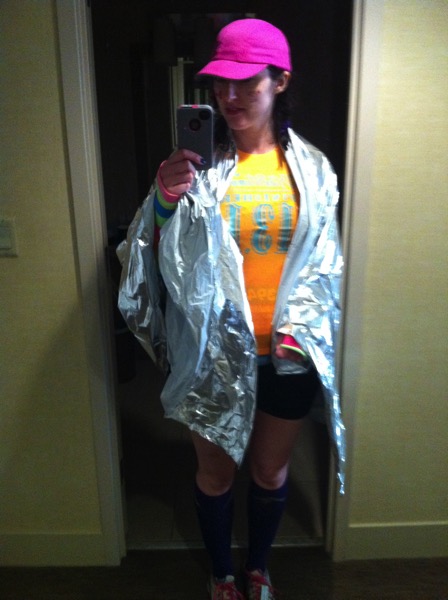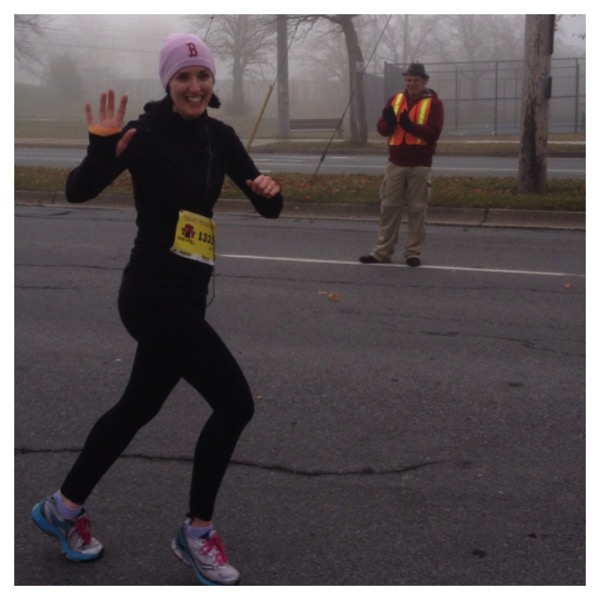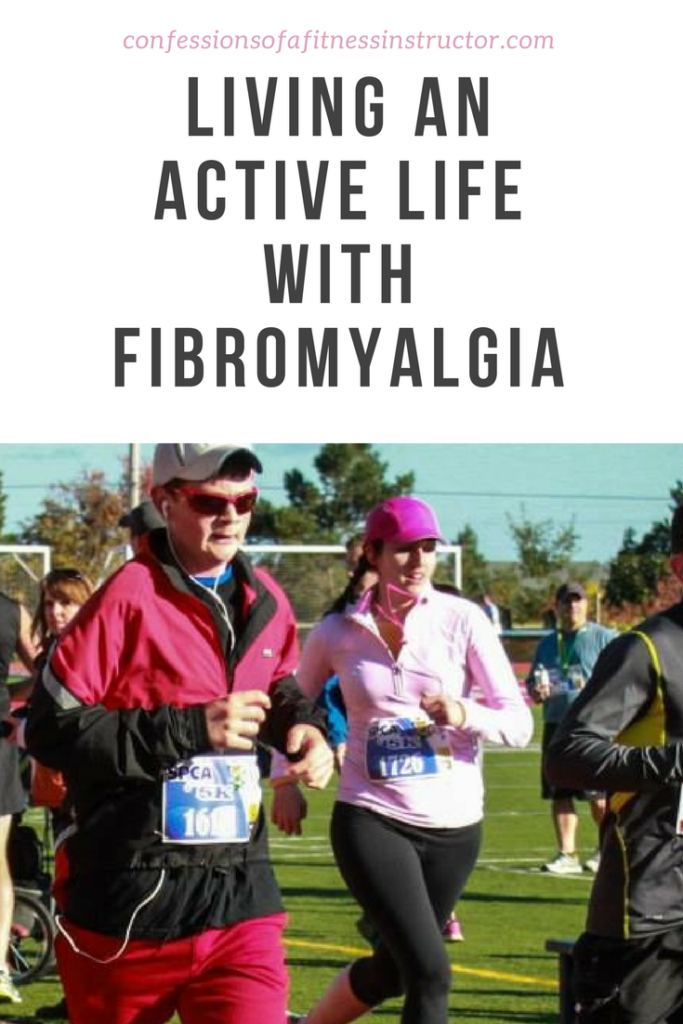Now and again I write about fibromyalgia and what it’s like living with it, but not often. Certainly not often enough considering one reason I started this blog was to show others living with chronic pain that an active life is possible. There have been a number of times I have *said* I was going to start talking more about it, and to a certain degree I have, but not in a manner which is really helpful to others.
This past weekend I decided enough was enough. That me showing the world that I am able to stay really active while having fibromyalgia isn’t enough to help others. I need to start passing on things that I’ve learned, my experiences, and more of my story in order to help others who are starting from square one.
Does this mean I’m going to be talking about nothing but fibromyalgia now? Certainly not. But the time has come for me to move past simply acknowledging that I have this condition, to actively trying to help others.
The first step in doing this was to set up a new page on my menu bar that is just for posts on fibromyalgia. Now anyone who comes to my site that wants to read more about the topic will be able to easily find all of the posts, and those visiting my site can easily see from day 1 that fibromyalgia is part of what makes me, me.
Now that we’ve got all of that out-of-the-way, let’s get back to the topic at hand – living an active live with fibromyalgia.

In case this is your first visit here, or you haven’t heard my back story, I wasn’t always active. In fact growing up I was in dance, and played tennis for a few years but other than that I was very much not into exercise. It wasn’t until a few years after my diagnosis that I really started to make movement a priority in my life.
When I was first diagnosed, I was put on Celexa, which is generally used as an anti-depressant. For those of you who may not know, antidepressants are often used for those with sleeping difficulties (like most people with fibromyalgia experience) because it is supposed to help you sleep more soundly. I was already taking two other daily medications (one for allergies and one for acid reflux), I was a few pounds over weight, I hurt all of the time, obviously wasn’t sleeping, and was in general an unhappy (yet happy) walking zombie.
The Celexa helped me a little bit (precious little), but I really wasn’t getting any better. Eventually my mother said enough was enough and sent me to a Naturopath. I’ve said it before, and I’m sure I’ll say it a million more times but she saved my life. Not only did she get me sleeping, she helped me come off all of my medications (and I’ve remained prescription free for over 10 years), and it was at her urging that I began to exercise.
How I Started
I didn’t go from in-active to running half marathons in the matter of a day or two. It’s taken me over 10 years to get where I am today. I started out by doing a 20 minute walking workout in my living room 2-3 times/week. I used Leslie Sansone’s Walk Away The Pounds 1 mile walk for my workout, and still recommend her videos to anyone starting out. Why? They are easy, low impact, low intensity, inexpensive, don’t require a bunch of equipment (or space) and very accessible. I often see them for sale at Walmart, and I know Amazon carries them.
The reason I like this type of workout even more than walking outside when you first start is because you aren’t having to leave your home. This way, if you get 10 minutes into it and realize that’s all you can handle for that day you can stop the DVD and you don’t have to worry about walking back home. And in those first days, you might find that you have to stop more often than you expect.
I would even go so far as to suggest that in the very beginning you only do the first 10 minutes of a workout. Why? Because when you first start to incorporate movement you are almost certainly going to have a flair-up. For me, it has always been a minor flair-up, and mostly just in my muscles/joints with extra fatigue but each person is different so your truth may be different from mine.
When that happens I know that your first instinct is to stop what you have been doing that is causing the flair-up, but this is where you have to get a little stubborn and suck it up for a few days. Even if you don’t want to, try to put in that 10 minute workout 5 days/week for a week or two, and notice how you feel. By the end of the 2 weeks you should start to notice that your body is adapting and no longer is flaring up so badly after each workout.
The Next Step
Once you’ve found yourself in a place where exercising 10 minutes a day is no longer sending you into a flair-up, you can start to increase the length of your workouts, moving up to maybe 15 minutes 5x/week, and then 20. Continue to take it slow, the faster you try to rush into it the more likely you will push too far too fast and end up with a really bad flair-up that will send you right back to square one.
It probably took me a solid 3 months to work up from the 20 minute 1 mile walk to regularly doing the 3 mile DVD. At the end of those 3 months I was still working out with the DVD 2-3 times/week and trying to go for a walk once or twice.
It can be really frustrating when you see other people take up exercise and they are doing on day 1 what it has taken you 3 months to work up to, but remember we are all fighting our own battles. Focus on your battle, not someone else’s.
Yoga

I really wish I had understood/appreciated yoga back then as yoga is a wonderful way to both help build strength and stamina but is also amazing in helping to improve circulation/blood flow to our muscles and lubricating joints. I strongly urge everyone (chronic pain sufferer or not) to find a way to incorporate yoga into your life.
A large part of the issue with Fibromyalgia patients is that they are stuck in their sympathetic nervous system. In other words they are “fired and wired” all of the time and are unable to “rest and digest”, which might not seem true as sufferers are really tired and can often appear lethargic, not wound up. But you can’t see what’s happening INSIDE, only what’s happening outside. Fibromyalgia is largely related to sleep disturbances and insomnia, proving that their parasympathetic nervous system isn’t “coming online”. Learning to tap back into the parasympathetic, toning the vagas nerve, and finding that rest and digest mode is incredibly important to find relief. Research instructors in your area and find one who is educated in training and balancing the parasympathetic and you’ll be making a huge stride in finding your way to a happier and less painful place.
Cardio vs. Strength
A well-rounded fitness regime includes both cardio and strength training, however it’s my personal opinion that when starting out, those with fibromyalgia are better off focusing solely on cardio. That is because strength training causes micro tears in your muscles which then need to be repaired, and can cause DOMS (delayed onset muscle soreness), when you are already working through chronic pain, you don’t want to intentionally add to that pain when first starting out. That’s not to say you won’t feel soreness/tightness in your body when you first start doing cardio, chances are you will, but to a lessor degree than if you were to dive head first into strength training.
Once you’ve built yourself up to a point where you can do 30 minutes of cardio 3-5 times/week without a lot of increased pain I would then suggest swapping out one or two cardio workouts with light strength training. Resistance bands are ideal, hand weights are a great option as well. As your strength develops you can start looking at different equipment and different types of strength training however I have found that things like plyometrics and working out with kettlebells both cause me significant joint pain/inflammation so I still steer clear of those.
What To Do When A Bad Flair-Up Happens
There is no avoiding it, despite our best efforts, bad flair-ups show up from time to time. For me they most frequently happen when the seasons change and when there are big shifts in the weather/barometric pressure. Understand that my situation is unique in that exercise is now how I make a living. So when those bad flair-ups happen I don’t really get to take time off from exercise. What I do, do is allow myself to take time off from other work (including this blog) in order to rest as much as I can. If you are in a position where you can take a couple of days off of exercise completely I absolutely think that is the thing to do. Just don’t let it go too long. Allow yourself 2-3 days during the worst of it, and then slowly start to get back at exercise first with some yoga or a nice walk, and then as you feel better get back to your daily workout regime.
[Tweet “How to add exercise to your life when living with Fibromyalgia”]
Exercise Is Not A Cure
If you have fibromyalgia, you’re always going to have it. Exercise doesn’t make it disappear but it certainly is one of the best ways to manage your pain and symptoms. It is a long hard road, one that you have to be really dedicated to stay on, but in my experience it has been one of the most rewarding things I’ve ever done. So often we feel like our bodies are working against us, it’s nice to know that in some small way, I am doing my part and doing my best to make my body work for me. And that’s a pretty great feeling.


This is a really wonderful and helpful post.
Thank you for sharing such excellent information.
I am sure this will help a lot of people.
Sharing!
Aww you’re too nice! xoxo
Love your post and your great positive attitude. I’ve only had fibro for 2.5 yrs, at the age of 53. I still push myself every day to walk my dog for about 30 min. Less in winter, but then the cold wreaks havoc with me. I need to add yoga and aquacize. I just want to say how much I appreciate someone with a really positive attitude; it has certainly made a huge difference with my own journey as well as many others that I know struggle with FM.
Thank you for your sweet comment! I’m so glad that I can help in my small way. And kudos to you for staying active. The winter really is horrible on me too. I don’t do extreme temperatures well at all so I can certainly empathize.
You really should check out your local pool(s) to see if they offer classes, aquafit is such a wonderful way to say active when you have chronic pain and inflammation!